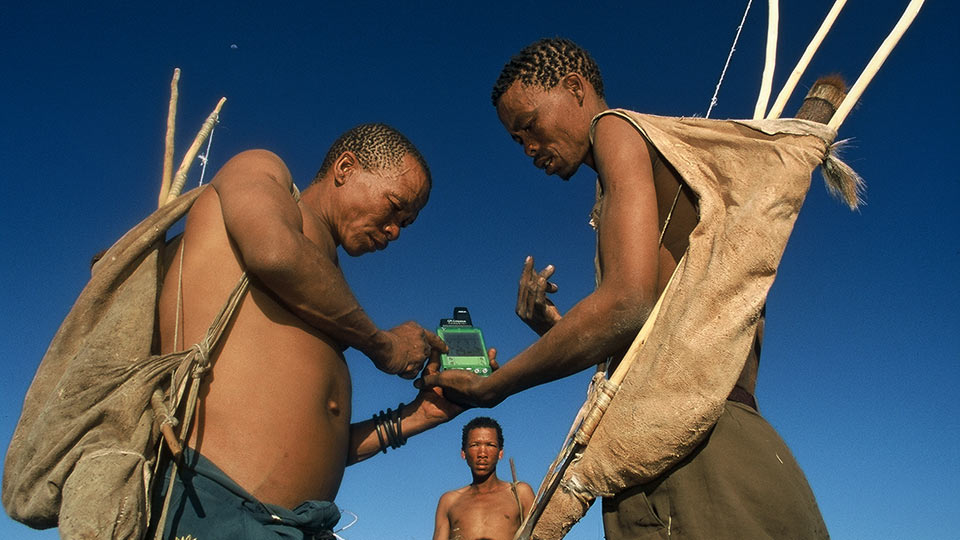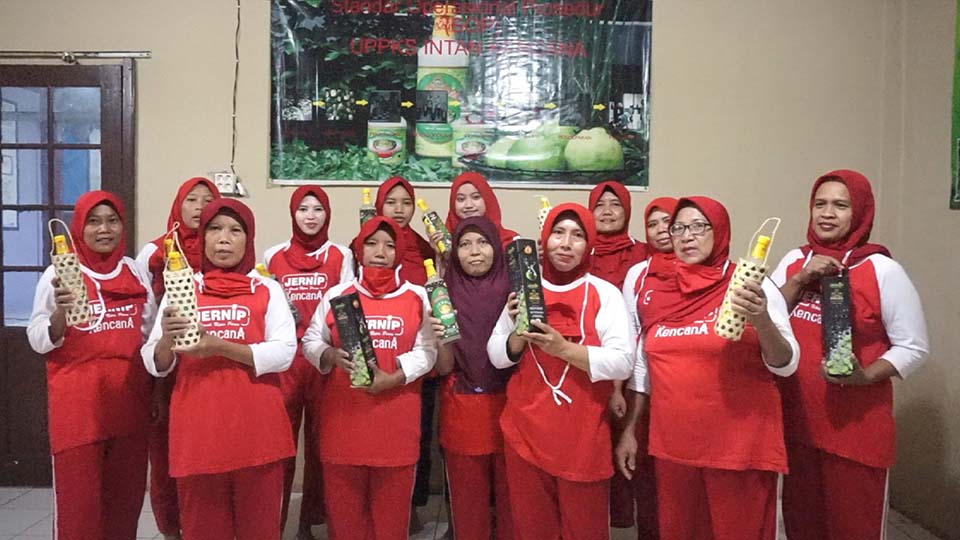From the Heart - Brands of Moldova, Moldova
London, Milan, New York, and Paris: Around the calendar, the world’s fashion-forward gather in global centers to survey the latest trends in the industry. Far from the bright catwalks where the latest high-profile designs are shown is an unlikely common thread: creators in the Republic of Moldova (Moldova), who are using intellectual property (IP) tools to tap into the global demand for fashion.
A small, landlocked country between Ukraine and Romania with less than 4 million people, Moldova might seem like a surprising participant in the high stakes, fast-paced world of fashion. Yet the country has a long history in the textile, apparel, footwear, and leather goods (TAFL) industry (United States Agency for International Development (USAID), 2015).

With a skilled workforce, ideal location between Eastern and Western Europe, membership in free trade agreements between the European Union and the Commonwealth of Independent States, and close access to a market of over 800 million people, Moldova offers attractive pricing, high quality products, short lead times, and close ties to the labor force that have fostered the growth of an international commercial textile hub (Invest in Moldova, 2015).
These features have led the TAFL industry to become integral to the Moldovan economy. However, over 90% of companies in the industry engage in what is known as lohn contracts, meaning Moldovan companies making products for export to foreign fashion labels (Cluster Policies in Europe, 2008). This has led to domestic consumption of only 20% of industrial production (Invest in Moldova, 2015).
Seeing an opportunity, in 2012 the Association of Light Industry Employers (APIUS) and the Government of Moldova, with the support of USAID, launched an umbrella brand for the country’s TAFL companies - Din Inimă - Brandurie de Moldova (From the Heart - Brands of Moldova). “We saw a need to decrease the number of enterprises providing only lohn services and increase the number of those selling products under their own brands,” said Ms. Diana Stici of the legal department of the Stage Agency on Intellectual Property of the Government of Moldova (AGEPI).
The Din Inimă umbrella brand aims to move to a higher income model of value-added products by increasing the competitiveness and prestige of Moldovan TAFL enterprises and brands through providing training on how to use IP effectively, developing consumer oriented promotional programs, and improving consumer perception and knowledge of local brands (USAID, 2015).
Partnerships
Supported by USAID’s second round of the Competitive Enhancement and Enterprise Development project (CEED II) for Moldova (USAID, 2015), Ms. Liliana Vieru of the International and European Integration Division at AGEPI explained that the Din Inimă umbrella brand is an example of a successful public-private partnership. Implemented by APIUS and the Moldovan Government, the project combines micro, mezzo, and macro level technical assistance and training to boost competitiveness and add value to products, thereby increasing sales and strengthening the industry.
As more companies joined the Din Inimă umbrella brand more also joined APIUS, with membership quadrupling to over 90 companies by 2015 (Chemonics, 2015). This facilitated a further public-private partnership for the TAFL industry between the Technical University of Moldova, APIUS, the Ministries of Economy and Culture of Moldova, and USAID, culminating in the launch of the Zip House Design and Technology Center of Excellence in 2015. The Center provides designers in the fashion industry with training and resources that address gaps in industry skills, fosters innovation, and cultivates entrepreneurship (Chemonics, 2015).
Trademarks and branding
It could be argued that success hinges on branding, design, and trademarks that connect with consumers just as much as it does on creativity and skill. “When speaking about the TAFL industry, the most critical area would be trademarks and design and that is why the focus of the Din Inimă project was on branding development and promotion,” said Ms. Vieru. “Brands bring to the holder a considerable competitive advantage, and Moldovan companies must understand that creating powerful brands means diminishing risk and obtaining higher profits,” added Ms. Stici.

The umbrella brand project helped participating companies learn the importance of reaching out to their customers through branding and the use of the IP system. “A strong brand adds a series of intangible benefits to a product that increase its value and we work hard to educate Moldovan entrepreneurs on the importance of protecting their creations. IP helps brands achieve distinctiveness for the goods and services under which they are marketed, and registered IP rights enrich a company’s image and heritage,” Ms. Stici continued.
AGEPI’s efforts have been paying off, with 49 Din Inimă participating companies acquiring at least one registered national trademark, making for a total of nearly 150 registrations (according to AGEPI). Seven of these companies also utilize the WIPO-administered Madrid system for international trademark registration, such as Zorile, which has registrations for its GAMP and SNOLKY brands. The Din Inimă logo and name are also registered with AGEPI under the ownership of APIUS.
Large or small, Din Inimă participants are relying on their branding strategies and IP protection to help expand Moldova’s presence in the fashion world and create a special connection with their customers. As Silvia Lazu, founder of the Bombonici brand, said, “Our trademark conveys our dedication to our customers and belief that we do not have clients, but only friends.”
Women and IP
Over 90% of those employed in Moldova’s TAFL industry are women from rural areas (Invest in Moldova, 2015). As new companies emerge in the domestic fashion industry and domestic and export sales continue to grow, more jobs are being created – most of which are going to women.

For example, over 80% of the nearly 700 participants attending Din Inimă training programs to learn new skills such as enhancing product quality, effective branding, and how to make popular designs, were women (Chemonics, 2015). Explaining the project’s success among women, Ms. Vieru said that “Fewer women are leaving Moldova for jobs in other countries, which has resulted in an increase in the skilled workforce in the TAFL industry.”
With more opportunities available women in Moldova have become empowered to learn new skills, earn more income, and play a larger decision-making role in their families and communities (The Changer, 2016). Combined with an increase in domestic brands, this has helped spur an increase in women entrepreneurs. In fact, Moldova’s TAFL industry has become a shining example of successful women entrepreneurship, with a majority of the over 400 companies in the country led or founded by women (USAID, 2015).
Business results
The Din Inimă program has made a lasting contribution to Moldova’s TAFL industry in a short time. By the end of 2015 over 70 new fashion labels were launched, representing approximately 20% of the industry, most of which are run by women entrepreneurs (USAID, 2015). In 2012, over 60 participating fashion labels joined together to launch a store selling exclusively Din Inimă brands, which expanded to more stores in the capital of Chisinau and other regions (USAID, 2015).
Looking over the numbers, Ms. Vieru explained that brands under the Din Inimă umbrella enjoyed a 34% increase in sales from 2012 to 2015. They also brought in US$7.4 million in new sales during this period from the domestic market for a growth rate of 34% and the share of lohn products in the industry has decreased by 15% since 2004 (Chemonics, 2015).

top 100 exporters of clothing (Photo: AGEPI)
Ms. Stici stressed that there were two important contributing factors to the success of the Din Inimă project. First was the umbrella brand’s ability to unite small and large Moldovan companies under one platform. “Large companies with recognizable brands were were able to use the program to develop further, while small enterprises used it as a startup platform,” she said.
Second was the training and educational opportunities the programed offered, which particularly resonated with small enterprises operated by a single entrepreneur, helping them fill in the gaps in terms of branding and IP knowledge. “Local creators must educate themselves and create brands that help them hold onto a place in the industry,” said Ms. Stici.
Investing in the future
Moldova’s TAFL industry and Din Inimă program provide an example of how an economy conducive to entrepreneurship and IP protection can promote social and economic development. “Participating companies have increased their efficiency, productivity, and sales, all of which has allowed them to invest more in their future development,” says Ms Vieru. “In turn, more taxes are paid to the local government allowing for an increase in social services, higher salaries, and the development of marketable skills for more people.”



